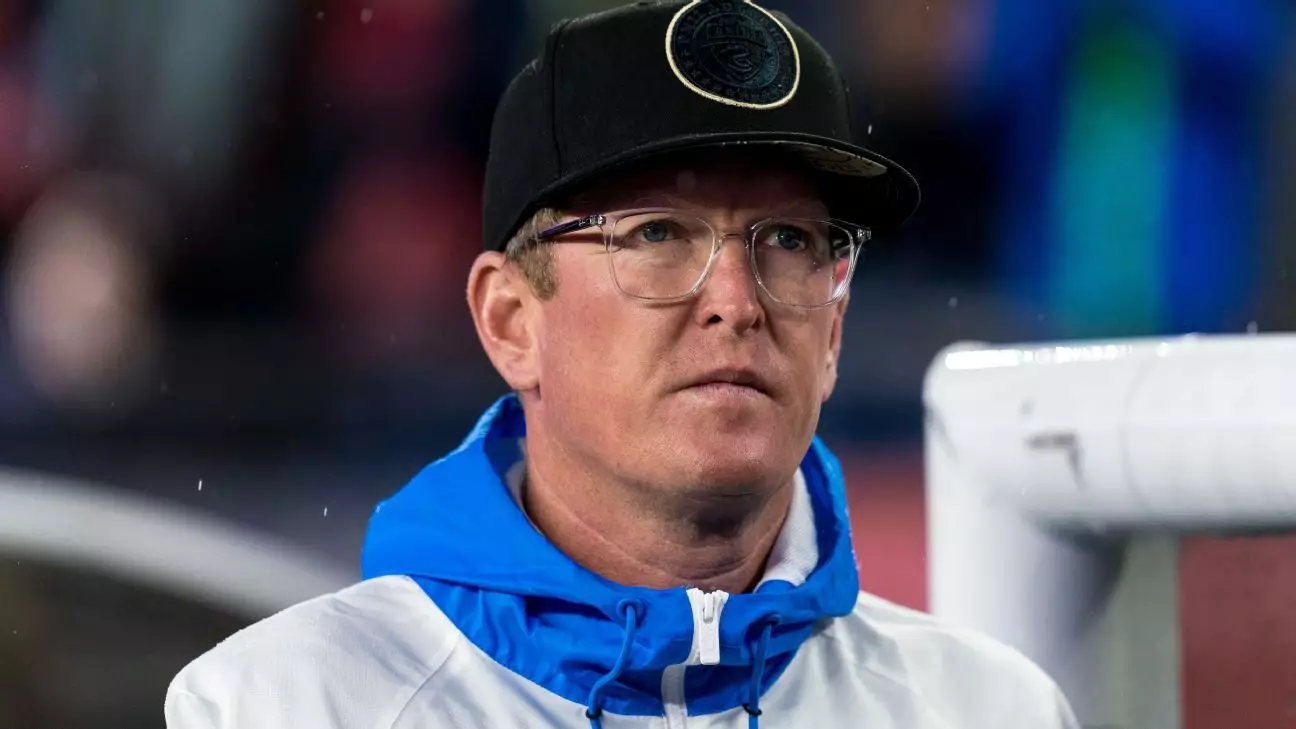The unexpected dismissal of Jim Curtin from his managerial role at Philadelphia Union has sent shockwaves throughout Major League Soccer (MLS) and left fans and insiders alike grappling with the implications of this bold move. Curtin’s tenure, which spanned over a decade, is not only highlighted by numerous accolades, including two MLS Coach of the Year honors, but also by his deep-rooted connection to the club—a bond that complicates the narrative of his ousting. This article dives into the complexities surrounding Curtin’s departure and the implications it holds for both the Union and the broader MLS landscape.
The abrupt nature of Curtin’s firing—described as a “parting of ways” despite internal references to it as an outright dismissal—reveals the brewing tensions within the organization. Sources close to the club reported feelings of being “blindsided” among staff, indicating that the decision was taken without a broader consensus or adequate warning. This disarray raises questions about the communication dynamics within the Union, particularly between Curtin and sporting director Ernst Tanner. The meeting where the decision was communicated reportedly ended with Curtin storming out, suggesting a breakdown not only in managerial relations but also in mutual trust.
Curtin’s history with Philadelphia Union runs deep. A native of Oreland, Pennsylvania, and a Villanova University graduate, Curtin’s journey with the club spans 14 years—from being part of the academy to leading the first team. His evident passion for the organization may have colored perceptions about his job security, and the decision to remove him after a single disappointing season is a stark and perhaps brutal reality check for a franchise that has been seen as a model for sustainable success in MLS.
The Cost of Expectations
Curtin’s departure underscores the ruthless nature of professional sports, particularly in a league like MLS, where salary structures and competitive dynamics can be unforgiving. The team’s failure to reach the playoffs in 2024 marked a crucial turning point, especially against the backdrop of sustained success in previous years, where the Union thrived on developing talent from their academy and making astute signings. However, the reliance on homegrown prospects and lower expenditure on player salaries is a high-risk strategy that can lead to rapid declines, as the Union experienced.
Reports indicate that Tanner’s management skills, particularly in the transfer market, are now under scrutiny following several unsuccessful signings. Players such as Andrés Perea struggled to make an impact, raising concerns over Tanner’s ability to sustain the club’s competitive status without Curtin’s effective leadership. In many ways, Curtin’s departure serves as a scapegoat for broader systemic issues within the franchise and signals a shift in how accountability is managed at the club.
Throughout Curtin’s leadership, Philadelphia Union was often celebrated as a model of efficiency and success in MLS—a club demonstrating that financial prudence can coexist with competitive success. The Union’s reliance on their academy has produced noteworthy players who have resonated well beyond the boundaries of MLS. However, with the departure of key talent and a seemingly stagnant player development pipeline, questions arise regarding the sustainability of this model.
Moreover, as reports suggest, a potential erosion of club culture has emerged with several key personnel leaving over the years. The absence of trusted allies may have exacerbated Curtin’s challenges, making him more susceptible to the pressures of underperformance. The departure of individuals like former technical director Chris Albright and assistant coach Pat Noonan has undermined the operational stability, leaving behind a vacuum of experience and institutional knowledge.
Looking ahead, the burden of revitalizing the club falls squarely on Tanner and whoever fills Curtin’s shoes. The pressure to not only regain competitive momentum but also to foster an environment where player development thrives cannot be overstated. The unsettling truth is that while Curtin’s expertise in maximizing resources and talent has been compromised, opportunities remain for new leadership to step in and recalibrate the team’s strategies.
Curtin’s future, however, appears bright. His reputation for resourcefulness, alongside an ability to develop promising talent, ensures that he won’t be without suitors for long. His next opportunity is likely to draw upon the principles he championed in Philadelphia, possibly allowing him to continue advocating for smaller-market clubs that strive to compete against wealthier franchises.
The Philadelphia Union faces a daunting challenge as they look to redefine their identity post-Curtin. The legacy left by a manager who resonated deeply with fans and players alike is one marked by community roots and a winning spirit. For a team that positioned itself against the backdrop of high-spending rivals, the task ahead is not just about finding a new head coach; it’s about preserving the culture and values that can sustain success in the increasingly competitive landscape of MLS.

